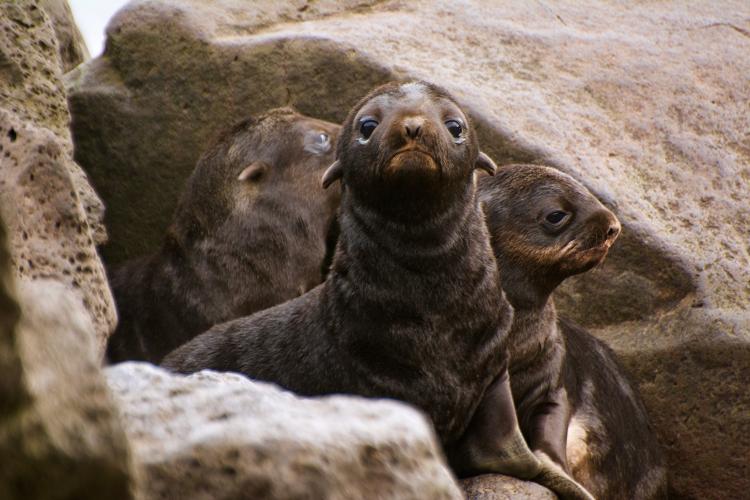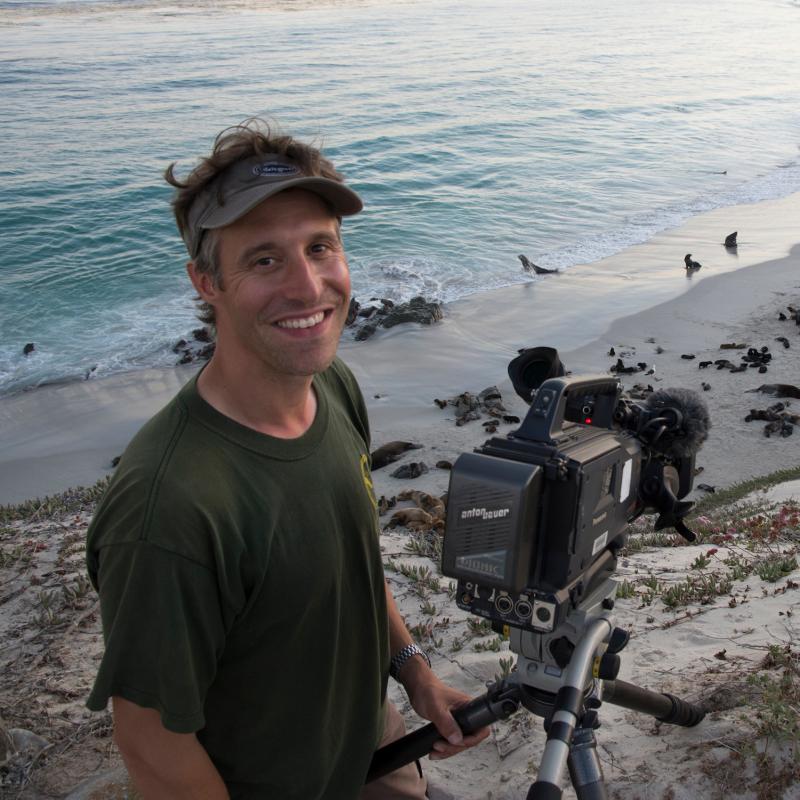First UAS Aerial Survey of St. Paul Island Fur Seal Rookeries Completed!
Monday, August 9, 2021 was a milestone in Pribilof fur seal research. We (Rod, Burlyn, and I) accomplished a goal that’s been years in the making. After flying our trusty Mavic 2 Pro drone over the expansive northern fur seal breeding grounds on St. Paul Island’s Northeast Point, we now have the first and only complete set of UAS aerial images that captures each of the active rookeries on St. Paul during the summer breeding season. Rod and Burlyn started this effort last Wednesday. After much troubleshooting, testing, and weather delays, we (mostly they) wrapped up this lofty goal.
There are 13 fur seal rookeries on St. Paul. Starting with Vostochni on Northeast Point, they wrap around the island’s east and south coasts and across English Bay. Many require hikes to good take-off and landing locations. All in all, the full mission requires a minimum 20 flights, and 8 hours of flight time. Batteries give us about 20 minutes of flight time. With limited batteries and flight plans to work from at any one time, technical challenges, traversing the island, and dealing with the variable weather out here, the logistics behind this were complicated.
NOAA Fisheries is responsible for the stewardship of the nation’s ocean resources. The purpose of acquiring these images is to test aerial photographic surveys as an alternative method for counting fur seal pups. This could replace the more disruptive mark-recapture method that scientists have been using for the past 60 years (more info in the next blog). NOAA biologists will analyze these photos back in Seattle to count the total number of pups in each rookery. This, in turn, will contribute to a total estimate of pup production on St. Paul Island for 2021. This estimate will be compared to the official results of the mark-recapture study. While a useful long-term data point on its own, these pup production estimates can also be used to extrapolate the total population of northern fur seals on St. Paul Island.
Northern fur seals only breed in four known locations in the United States: the Pribilof Islands, Bogoslof Island in the Aleutian Chain, and San Miguel Island and the Farallon Islands along the coast of California. After living entirely pelagically (at sea) for at least the past 6–8 months, they return to land on a predictable schedule.
Territorial males (typically ages 7 and up) arrive in May. Breeding females (ages 3 and up) follow in late June through July. The females typically give birth to pups within a few days of coming on land. Within a week, they breed again and spend the next 3–4 months coming and going on foraging trips in order to produce enough milk for their growing pups. The pups don’t really start venturing into the water until they are a month or two old. This makes early to mid-August the perfect time to count the total number of pups born in a year. Pups wean and leave the island in early November and typically won’t return to land for 18 months, some even longer.
Stay tuned for Blog #3, which will cover the mark/recapture method for estimating fur seal pup production. We are conducting both methods this year to test the viability of the aerial surveys.
Q & A
I’ve received some questions from readers since Blog #1, so here’s a few answers. Feel free to send more questions to Paul Hillman (paul.hillman@noaa.gov), and I’ll do my best to answer them in the next blog.
What do you eat on St. Paul Island? Do you cook your own food? Are there restaurants?
St. Paul is a village of about 440 people. There is a grocery store here, but no restaurants at present (there used to be one that served take-out food). Because of COVID restrictions, we are isolated from the community and are not allowed to go to the grocery store per the NOAA and City of St. Paul Safety Plans. We shipped all of our own food up here and brought perishables along with us in coolers. The grocery store can also provide a delivery service. So, yes, we cook our own meals. From a survey of our group at Staff Quarters, different folks have cooked spaghetti and meatballs, fish tacos, steaks, venison roasts, mac and cheese, Thai curries, and more.
How has the weather been during the heat wave hitting the West Coast?
If you look at the forecast for St. Paul Island, you’ll pretty much see the same thing every day: high of 52 to 54 degrees F, and a low of 48. Whether it’s sunny or cloudy, the temperature is consistent, though it does feel a lot warmer when the sun comes out. We had dry weather this past week, which has been great, with occasional misty clouds coming and going. We didn’t see any “heat wave” like the West Coast experienced.











